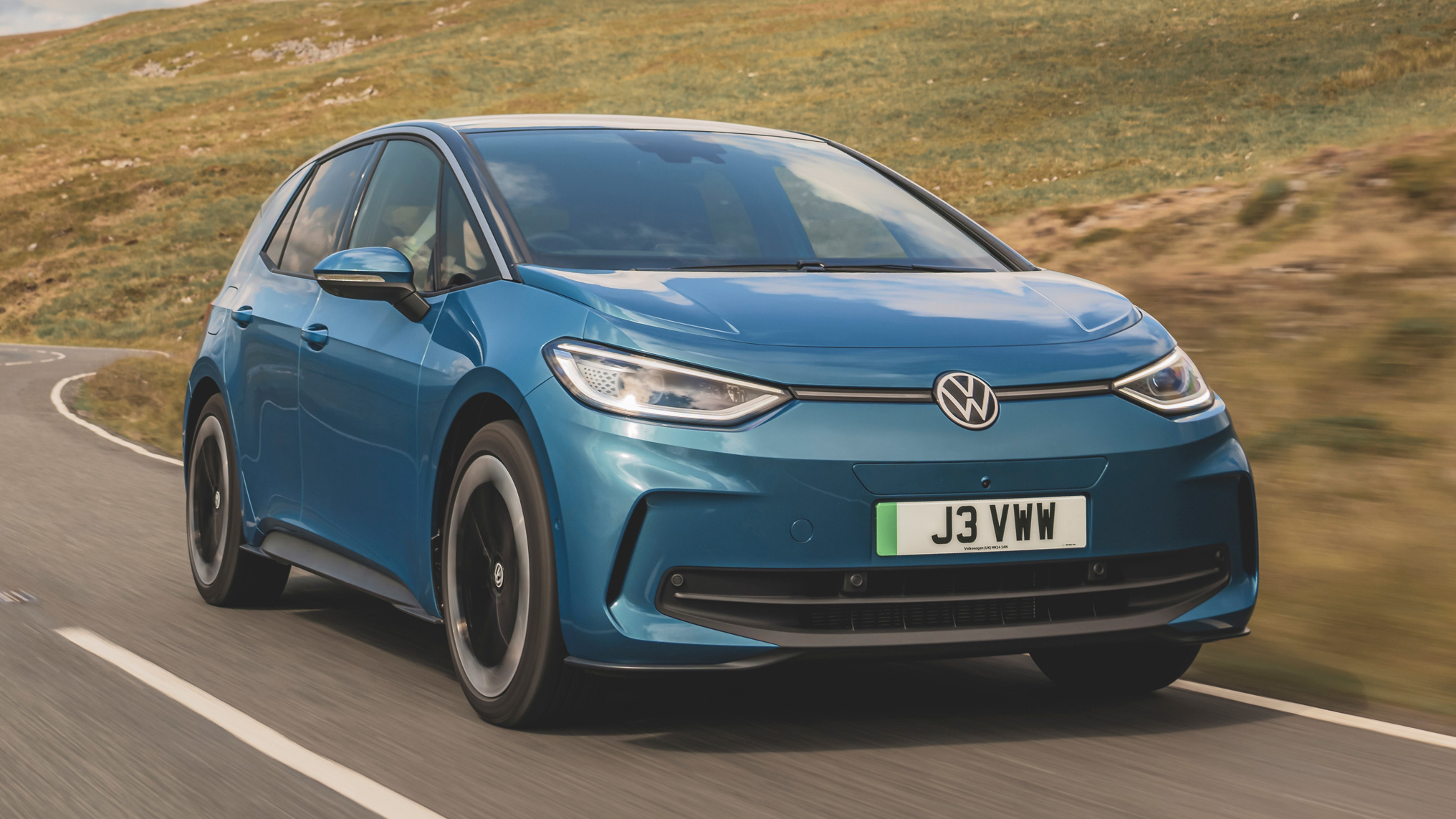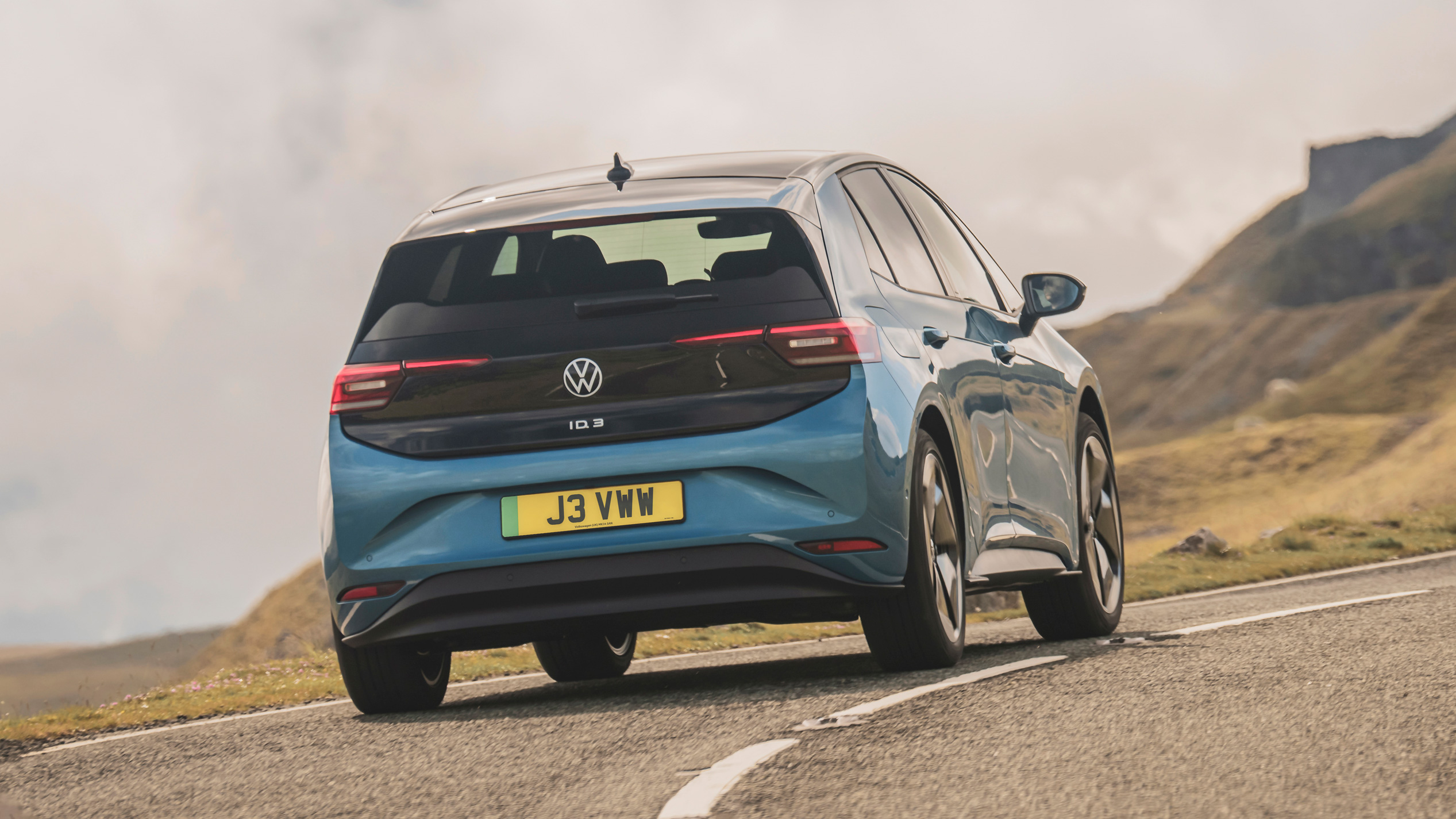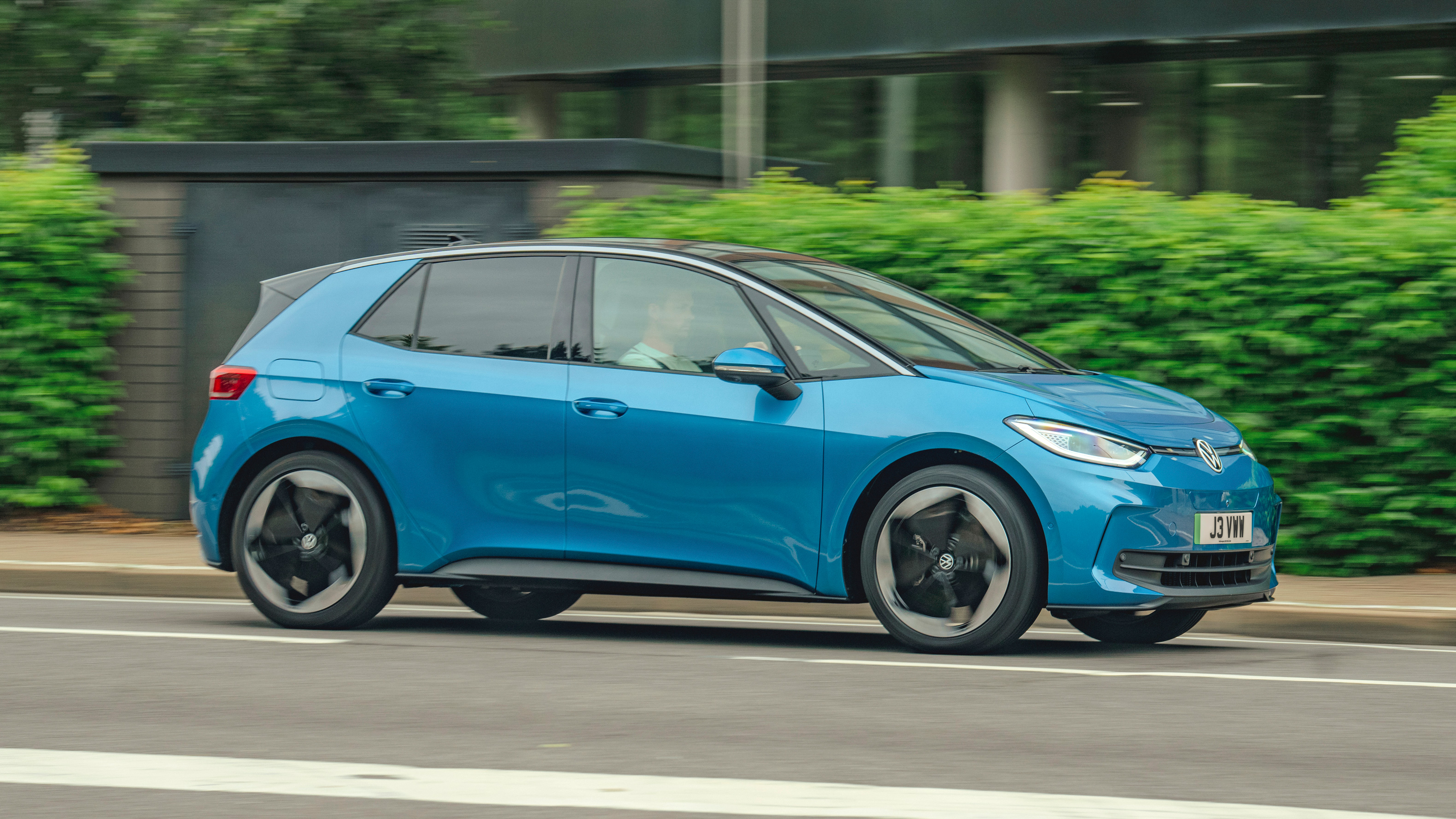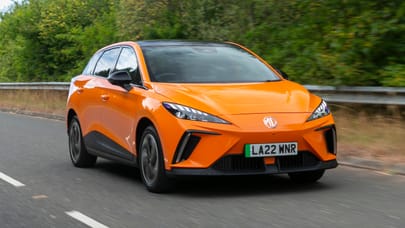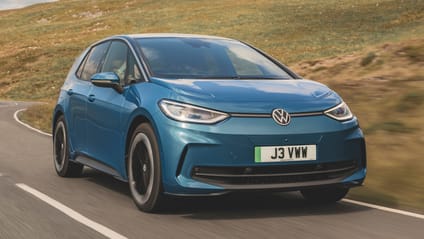
Good stuff
Very relaxing and refined, now has proper VW quality, roomy for four
Bad stuff
Not that engaging, still some driver-interface annoyances
Overview
What is it?
This is Volkswagen's mainstream electric family hatch. First deliveries of the ID.3 only started in late 2020, but even so it was given an early facelift at the beginning of 2023. Which... it rather needed.
Why? Well, firstly because having arrived among the vanguard of hatches this size, it inevitably found itself surrounded by newer rivals stealing some of its thunder. And second, because the original ID.3 just wasn't quite Volkswagen enough. It didn't have the necessary feeling of interior quality. Plus, it was in many ways quirky or just plain irritating. The facelift was supposedly the fix.
Those new hatchback rivals? The Renault Megane electric, MG4, Vauxhall Astra Electric and Peugeot e-308. Plus the Cupra Born on the same platform as the ID.3. You might also be cross-shopping with any number of compact-ish electric crossovers such as the Kia EV3, Volvo EX30, Hyundai Kona Electric or anything from the Stellantis stable. Fiat 600e, anyone?
WHAT CHANGES DID VW MAKE FOR THE FACELIFT?
The 2023 update made the ID.3 slightly less oddball. VW pitched the first generation as the car to pick up the baton from the Golf. But it wasn't that. Whereas a Golf always feels comfortingly conventional, the ID.3 looked a bit radical and its operation took a bit of learning. You could imagine people taking half an hour's headscratching before they managed to drive a rentacar ID out of the airport multi-storey.
The bonnet now looks longer, because its old half-black split paint treatment has gone. So the ID.3 looks more like a car and less like a future spacepod. Changes to the front bumper make it look wider as well as helping some air slip past the wheels more easily. The front wings look longer because they're no longer broken up by a badge plaque. The tail lights are wider and more detailed.
The original ID.3 was sparse inside, with acres of angular and hard-surfaced plastics. Maybe this was VW telling us we'd arrived in a new world. Maybe it couldn't afford soft mouldings in the aftermath of the dieselgate scandal.
But whatever, VW's customers rose up with one voice: if this was supposed to replace the Golf, they wanted the same sense of premium quality please. VW has now acquiesced. The dash and doors are now clad in soft-touch and stitched surfaces. And much nicer it is in here too.
Like the furniture, the original screens and software felt like they'd been done in a rush. Software updates have improved the screen systems. Although perhaps not enough.
AND WHAT'S THE SAME?
It's a purpose-built electric platform. Unusually, it's rear-drive, the motor and its inverter being tucked under the boot floor. 'Rear-engined like a Beetle,' as they say in Wolfsburg.
This means a long wheelbase, with the slab battery tucked under the passenger cell. Thus the roof is taller than you'd expect. Still, it's a roomy family car, more so than a Megane or electric Astra, thanks to better leg space for the back passengers.
RWD means a tightish turning circle, but it also means the regenerative braking is fairly meek, to avoid the danger of rear-wheel skids on slippery surfaces. That's why FWD or AWD e-cars can extract more regeneration and have the potential to be more efficient in variable-speed driving.
What are the specs?
They've changed a bit over the years too, but at the time of writing in mid-2025 the useable battery sizes are 52kWh (ID.3 Pure), 59kWh (ID.3 Pro) and 79kWh (ID.3 Pro S or the hotter GTX). The entry level Pure cars get a 168bhp motor, while the Pro and Pro S both get 201bhp. The sporty GTX Performance gets a hefty 322bhp, and we've gone into more detail on that particular car here.
We'll drop the hot hatch and focus mostly on the standard ID.3 here, so it's the Pro that's the quickest of the bunch. That'll do 0-62mph in 7.6 seconds compared to the 8.2 seconds of the less powerful Pure and the heavier Pro S. Although frankly, compared with the Renault Megane all ID.3s are too heavy. The biggest battery Pro S just sneaks under two tonnes.
The WLTP range figures are 241 miles for the Pure, 269 miles for the Pro and an impressive 351 miles for Pro S. For extra info on range, charging and energy consumption, click through to the 'Buying' tab of this review.
HOW IS IT TO DRIVE?
A Golf is comfy and refined, but also has a gently amusing side. You might expect the ID.3 to be similar, especially as rear-drive has the potential to add a little cheekiness.
But no. VW has doubled down on the comfort and refinement. It's stable, smooth-riding and wonderfully quiet – not just in its absence of engine sound of course, but also the limo-like hush of tyres, suspension and wind.
It's stable, relaxed and precise in its steering, accelerator and brakes. But there's no feedback or engagement. The Megane, MG4 and Astra are all more fun. For more details click the 'Driving' tab.
Want to know what the best electric cars are? Click here for the top 20
Our choice from the range

What's the verdict?
Although the Nissan Leaf was a decade ahead of it, the ID.3 was quite a radical car for VW. The shape, software and interior were admirably brave, but in hindsight maybe a bit too much. It was a massive engineering effort, but shoved on sale in a tearing rush as an atonement for dieselgate. The cutting of corners – cheap cabin furniture and rough-edged software – was painfully obvious.
The facelifted car's control systems can still be infuriating, but their actual logic and graphics have been steadily improving with OTA software updates.
The facelift addresses the too-radical-for-some exterior, and bare cabin. It's a nice place to sit now.
The ID.3's best qualities haven't been messed with. It's roomy, quiet, comfortable and soothing. It's efficient and has a good range. It's satisfying to drive, just not much fun for a hatchback. Albeit more fun than the crossovers you might be cross-shopping with.
All of which gives it a definite character and likeability among an increasingly busy lineup of rivals.
The Rivals
Trending this week
- Car Review
BMW 1 Series
- Top Gear's Top 9
Nine dreadful bits of 'homeware' made by carmakers




